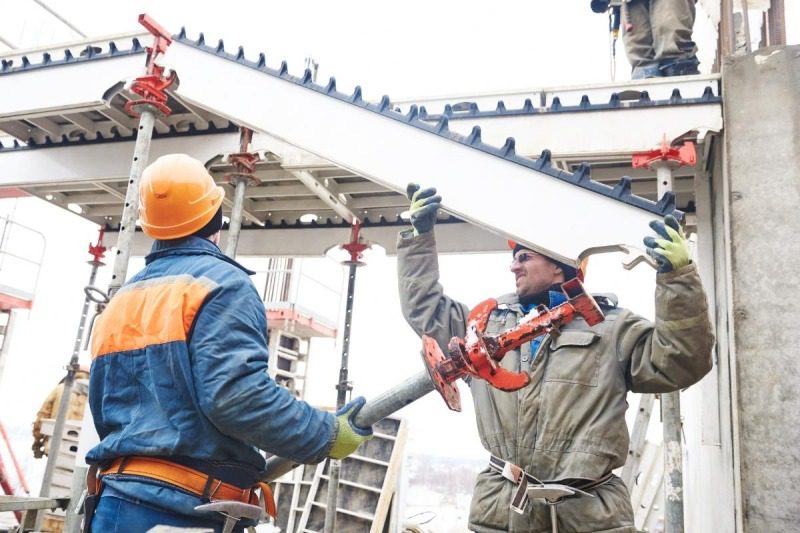
There is a lot of history when it comes to blue-collar jobs, and how the term first came to be.
“Blue-collar” is a term that is used to describe a type of employment. Blue-collar jobs typically involve manual labor. Blue-collar work is not office work, and blue-collar workers typically use their physical abilities or their hands to complete their tasks.
Payment is typically considered low income and comes in the form of an hourly wage. However, it is not uncommon to see some salaried blue-collar roles.
Blue-collar jobs typically require an individual to have at least a high school diploma or relevant GED equivalent to qualify for the role. Although, this is not always the case.
This article will detail everything you need to know about blue-collar jobs!
Table of Contents
The History Of The Term “Blue-Collar”
The term “blue-collar” was initially used only to contrast the term “white-collar”, and it first appeared in 1924. In 1930, the term began to be used separately for manual workers.
At the time, uniform was not required in factories. Most workers chose to wear dark colors because they best hid dirt on clothes that individuals could not afford to wash every day. Companies noticed this quickly and began to provide their workers with blue uniforms, which were more difficult to get dirty than brighter colors.
Other Colored-Collar Workers
While the terms blue-collar and white-collar refer to the historical color of workers’ clothes, there have been recent colored-collar terms that lack attachment to a concrete image, but rather represent a concept or movement.
For example, people who work in conservation came to be known as “green-collar workers” thanks to the environmental movement.
“Pink-collar workers” was popularized in the 1970s by Louise Kappe Howe, a writer, and social critic. It was used to refer to women who work as elementary school teachers, secretaries, and nurses.
Meanwhile, the term “gold-collar workers” referred to people who worked in specialized fields, such as finance, engineering, and law. It was sometimes used to reference people in the service industry.
“Grey-collar workers” referred to individuals who worked in their 60s, and “no-collar workers” reference those who have no collared uniform at all, like tech-industry professionals.
Modern Day Blue-Collar Workers
Previously, blue-collar used to describe an individual’s social status as well as their line of work. Those who had blue-collar jobs were considered working class and generally worked for low income. Blue-collar jobs were considered “unskilled”.
However, these days the line between blue-collar and white-collar workers is less distinct. Certain jobs have started to combine white-collar and blue-collar work, such as that of a construction manager.
Additionally, more and more blue-collar occupations now require higher education qualifications. For example, to be a construction and building inspector you need at least a bachelor’s degree in architecture, building inspection technology, or engineering.
Some blue-collar workers even receive a higher payment than those in a white-collar role.
This is dependent on a variety of factors, such as the number of hours a blue-collar laborer works, the skill level required to do the job, and the laborer’s level of experience the typical salary of a prison guard (mid-career) is higher than that of a college professor.
Examples Of Blue-Collar Jobs

Here are some examples of blue-collar jobs:
Electric Power-Line Installer (And Repairer)
Individuals in this industry are responsible for repairing, installing, maintaining, and removing both high-voltage and low-voltage distribution lines, as well as equipment and associated facilities. They must help factories, houses, businesses, etc. to receive electricity.
Electric power-line installers and repairers are typically on call for 24 hours so they can quickly respond to emergencies, such as a power outage.
As of February 2021, to qualify for this role you will need a high school diploma or GED equivalent. You would then need to complete a 4-5 year apprenticeship and around 640 hours of classroom training.
Locomotive Engineer
Known colloquially as “train engineers”, workers of this industry operate trains that transport both cargo and passengers. They are responsible for operating the controls and monitoring the battery voltage, air pressure, and speed.
Locomotive engineers must ensure the train sticks to its schedule and must work with other railroad workers to monitor equipment and update the train inspection logs.
As of February 2021, locomotive engineer work requires a high school diploma or GED equivalent. Those aspiring for this role can start in an entry-level position, such as a conductor before qualifying for a higher role.
Most U.S. states require their locomotive engineers to complete a certification training program. Locomotive engineers need to pass a vision and hearing test, as well as a knowledge and skills performance test.
Structural Steel And Iron Worker
Structural steel and iron workers help to construct anything from buildings and towers to fences and damn, to storage tanks and bridges, and they achieve this by laying out and fabricating sheet metal and steel.
Structural steel and iron workers are responsible for completing the framework of a structure with either iron or steel beams, girders, and columns, and they must achieve this by welding, riveting, and any other relevant method of construction.
As of February 2021, structural steel and iron workers must have a high school diploma or a GED equivalent. They must also complete an apprenticeship program, which usually takes 4 years to finish. However, some companies will offer on-the-job training instead.
Boilermaker
Individuals who work in this industry are responsible for making and installing boilers.
They must also make and install other containers that can store gas or liquids. They must test the boilers to ensure they are safe and carry out maintenance regularly.
Aside from this, boilermakers cast pieces, form their shapes, weld them together, and analyze blueprints.
As of February 2021, boilermaker positions require a high school diploma or GED equivalent. Boilermakers must complete an apprenticeship. Aspiring boilermakers can take a course in a vocational or technical school but will learn any additional skills from their employers.
Final Thoughts
In the past, when someone said “blue-collar” they referred to both a job and a social class, typically working class. These days, “blue-collar” simply refers to a job that usually involves manual labor. Those who hold blue-collar positions usually work for a low income and are paid hourly.
Although, lines are becoming less and less clear between a blue-collar, and a white-collar job. Some blue-collar jobs are salaried and pay more than white-collar work.
In the past, you would typically only need a high school diploma or GED equivalent to qualify for blue-collar work, and while that remains true today, some blue-collar roles require higher education qualifications.









